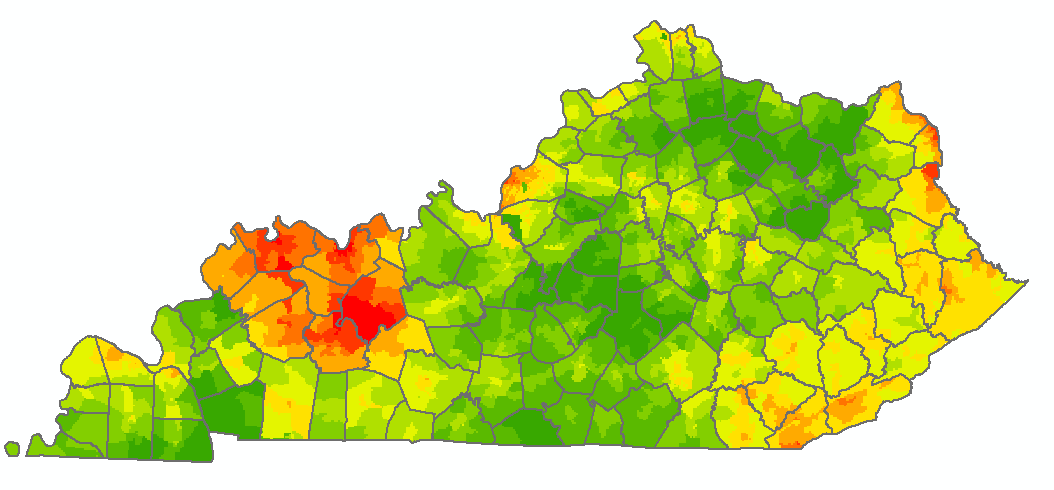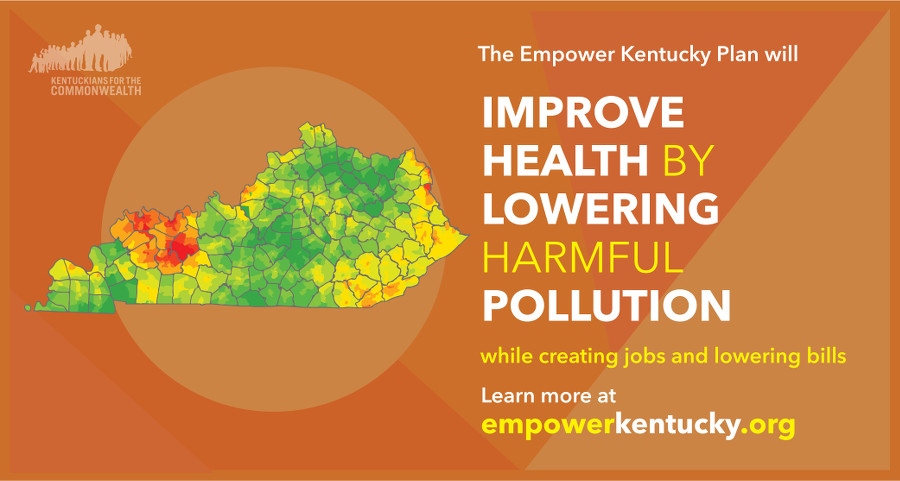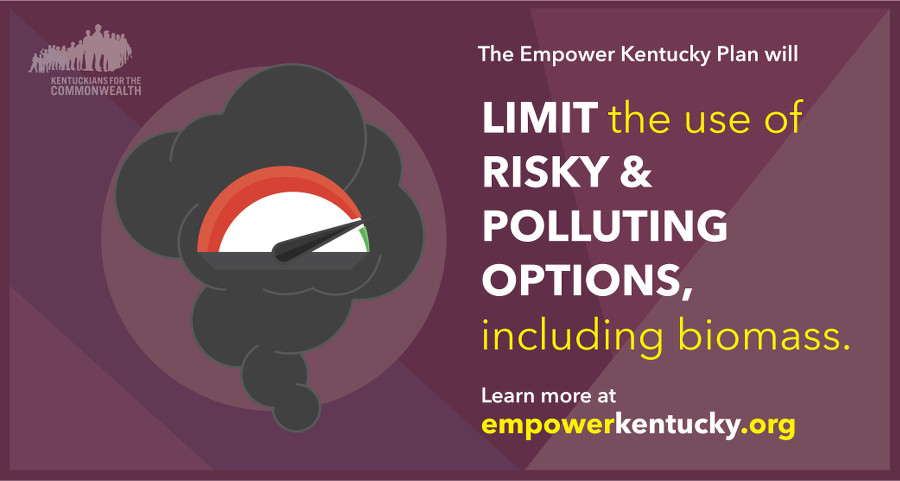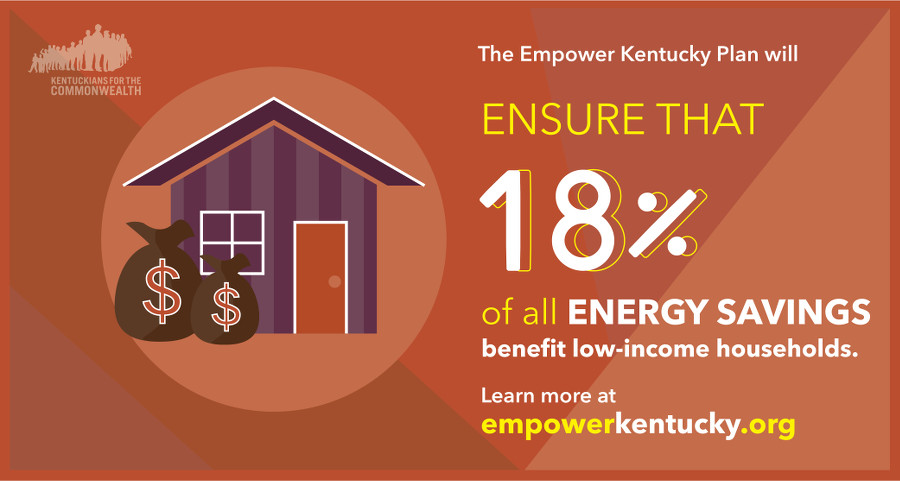“Regardless of what part of Louisville you live in, you’re impacted by toxic air. In Rubbertown you can’t drive with windows down. I get nosebleeds driving through West End and Rubbertown. Burning eyes caused me to quit a job near a plant.”
– A Seat At The Table Participant, Louisville, Kentucky
What does this mean, and why is it important?
Prioritizing health and equity means making sure the Empower Kentucky Plan improves the health of all Kentuckians and directly engages and benefits communities most affected by pollution, racial injustice, and poverty.
Kentucky’s energy system contributes to many serious health conditions.
- Coal plants are major sources of many pollutants harmful to health, including soot, sulfur dioxide, and nitrogen oxides.
- According to a report by the Clean Air Task Force, our Commonwealth ranks at or near the top of all states for the rates of premature death, lung disease, heart disease, and asthma linked to power plant pollution.
- Our power plants are also a primary source of mercury pollution, which affects the nervous system and brain development in children. As a result, all waterways Kentucky are covered under a state mercury advisory which cautions residents to reduce or restrict consumption of local fish.
- Additionally, power plants are the largest source of CO2 pollution in the U.S., contributing to global climate change and increasing Kentuckians risk of harm from extreme weather events like floods and severe storms, as well as from intense heat, insect borne diseases, allergens, and other health impacts.
- People living near strip mines in eastern Kentucky and Central Appalachia have higher rates of cancer, heart disease and birth defects than people in similar, nearby, non-mining counties.
- Coal miners face serious health and safety risks, including on-the-job injuries and an alarming recent spike in the number of cases of advanced black lung disease.
- People living in heavily polluted communities often experience high levels of stress and poor mental health.
The harmful health impacts of pollution are not evenly distributed. People of color and low-income people are more likely to live in heavily polluted places and to suffer higher rates of related health conditions. Nationally, three out of four African Americans live within 30 miles of a coal plant. African-American children are three times more likely to be admitted to the hospital for an asthma attack, and twice as likely to die of asthma. In Kentucky, high poverty communities have significantly higher rates of many health conditions linked to pollution exposure, including heart disease, cancer, and premature death.
Prioritizing health and equity means carefully evaluating the risks and the benefits of our energy choices to achieve better outcomes for all Kentuckians, especially low-income people and communities of color. There are many proposals to address climate change, but not all proposals would actually improve health, benefit ratepayers or reduce pollution in the most affected communities. For example, to meet our climate obligations, Kentucky can accelerate investments in low-risk and no-regrets energy solutions like efficiency, solar, wind and hydropower. Or we could do things like build out our natural gas infrastructure, burn more trees or trash to generate power, or expand nuclear generation – options come loaded with higher risks to ratepayers and our health and climate.
For all these reasons, prioritizing health and equity has been a central theme of the Empower Kentucky process and plan. For us it means paying special attention to the relationships between pollution, health, race, poverty and power. It means making sure the communities who are most affected by pollution, poverty, and racism are front and center in any planning process. It means developing policies that will invest in frontline communities and deliver real benefits, including less pollution, more jobs, and lower bills. And it means avoiding risky energy options that could threaten our health and climate and energy policies that could make matters worse for frontline communities.
What are we learning from our environmental justice analysis of Kentucky?
 This map shows the cumulative pollution burden across Kentucky. Click the image for a PDF with documentation.
This map shows the cumulative pollution burden across Kentucky. Click the image for a PDF with documentation.
To better understand relationships among pollution, health outcomes, race, and poverty in Kentucky, we developed an Environmental Justice Analysis as part of the Empower Kentucky planning process. Environmental justice is defined by the U.S. EPA as “the fair treatment and meaningful involvement of all people regardless of race, color, national origin or income” with respect to environmental protection.
The EPA encourages states to do an environmental justice analysis to identify communities most affected by power plant pollution and to inform the development of state energy plans. To create an Environmental Justice Analysis for Kentucky, we examined a broad range of pollution sources associated with Kentucky’s energy sector and other industries. We examined nearly a dozen pollution and risk indicators, including proximity to surface and underground mine sites, oil and gas wells, injection wells, coal haul roads, high traffic areas, waste disposal facilities and other high risk facilities, and exposure to ground level ozone, particulate matter, lead, and more. We also analyzed the rates of exposure-related health conditions across the commonwealth.
Our analysis finds that pollution from energy sector sources is “directly, strongly, and positively correlated with health problems in Kentucky.” It also finds there are important differences in the types of pollution that affect Kentucky’s poorest counties, compared to the types of pollution that affect our counties with the highest percentage of people of color.
For example, Kentucky’s counties with high poverty rates are more likely to be exposed to pollution from coal mines, oil and gas drilling, and coal haul highways. On the other hand, our counties with a high share of minority residents are correlated with high concentrations of particulate matter, which contributes to asthma and many respiratory diseases. People of color in Kentucky are also more likely to live near power plants and coal ash impoundments and in counties with high rates of: lead exposure, concentration of ozone, traffic pollution, waste facilities and plants handling hazardous materials.
View an interactive map of showing cumulative pollution, demographics, and the location of power plants in Kentucky.
Putting it all together
Kentuckians have an opportunity to protect and improve the health of our families and communities while slashing CO2 emissions that are harmful to the stability of our climate. By designing a state plan that emphasizes energy efficiency and renewable energy (and relies less on coal, gas, and biomass), we can produce multiple health benefits for Kentuckians.
Cleaning up our energy system will reduce harmful air pollution like SO2, NOx, and fine particulate matter that contribute to higher asthma, cardio-respiratory diseases, and premature deaths in our state. Burning less coal also reduces mercury pollution, which is harmful to brain development in our children. And relying less on fossil fuels will reduce exposure to pollution for people living near every stage of energy extraction, transportation, processing, burning, and waste disposal.
Designing a state energy plan that prioritizes health and equity means being intentional to make sure that all Kentuckians benefit from lower pollution and clean energy jobs, especially low-income and people of color communities who are most affected by cumulative pollution and poor health conditions today.
Empower Kentucky Recommendations

- Host a meaningful public process to shape Kentucky’s energy future
- Meaningfully engage a broad, diverse set of Kentuckians (individuals, workers, businesses, communities, organizations, unions, educational institutions, and utilities) to shape a shared vision for an energy system that is good for all Kentuckians.
- Adopt strong statewide goals and a policy framework for reducing risk and harm to our health and climate and shaping a just transition to a clean energy economy.
- Do a comprehensive environmental justice analysis
- Establish an Environmental Justice Commission with diverse and strong community representation, to create an environmental justice analysis, recommend energy policies, and monitor impacts on health and equity.
- Develop a comprehensive state Environmental Justice Analysis to deepen our understanding of relationships between pollution, health, race and poverty in Kentucky.
- Put a price on CO2 pollution to achieve significant pollution reductions, and reinvest nearly $2 billion in a just energy transition over next 15 years.
When we first started shaping the Empower Kentucky plan, our goal was to come up low-risk energy strategies that result in better outcomes in terms of jobs, health, and average bills, and meet the Clean Power Plan’s requirement to reduce CO2 pollution. To do so, we worked closely with Synapse Energy Economics to evaluate the outcomes of specific policy and energy strategies. Along the way we learned something important about Kentucky’s energy system: Energy efficiency and renewable energy are not enough to achieve significant pollution reductions in Kentucky, unless we also include a price on pollution as part of our plan.Here’s the rub: Unless we put a price on CO2 pollution, utilities in Kentucky would simply sell more coal energy to other states as Kentuckians demand less of it. Other states could comply with the CPP’s climate requirements by burning less coal themselves and buying more of Kentucky’s dirty power. In essence, we would become a regional designated smoking area. This unfortunate outcome is partly due to the fact that the Clean Power Plan itself is far weaker than expected and would impose low costs on Kentucky’s utilities if they pollute in excess of the CPP’s CO2 standard.
After learning this outcome, the Empower Kentucky planning team began to explore how putting a modest price on CO2 pollution would affect our energy system, including the impact on emissions, jobs, and average bills. We also looked at the impact of various carbon prices on the share of Kentucky’s energy mix that would come from coal, gas and renewables.We recommend putting a price on CO2 pollution in our electric power sector starting at $1 in 2018 and rising to $3 over 15 years. By 2032 this policy will generate nearly $2 billion in revenue, which will be plowed back into efficiency programs and efforts to create jobs and support a just transition for affected workers and communities.
This scenario still results in lower average bills – and more jobs – in Kentucky by 2030 than the business as usual scenario, while reducing CO2 emissions by 36% from 2012 levels. That’s far below the CPP’s requirements, and it is good news for our health in Kentucky, since less CO2 from power plants also means lower emissions of soot, sulfur dioxide, nitrogen oxides, mercury and other harmful pollutants.
While some may find any talk of a price on CO2 alarming, we acknowledge others may find our recommended level far too low. For example, the Obama Administration calculated that the actual costs to society of CO2 pollution is just under $40 per ton. Carbon trading programs in the northeastern states and California result in CO2 costs that range from about $3.50 to $12 per ton.
Our planning team recommends a low price at this time because we discovered that any higher cost on CO2 would simply accelerate Kentucky’s rush to build new natural gas plants. This relatively low CO2 price seems to be not-too-hot and not-too-cold for Kentucky. It’s high enough to drive power plant pollution below the CPP requirement. But it’s not so high that it drives massive additional investments in a natural gas infrastructure.
As the costs of renewable energy continue to plummet, we may soon reach a moment in Kentucky where a putting a higher price on CO2 will result in greater investments in renewable generation, rather than gas. Until then a relatively low price seems necessary to prioritize health while also supporting Kentucky’s transition to a clean energy future.

- Prioritize low-risk energy solutions and consider the full range of costs, risks and benefits when making decisions about our energy future
- Do not allow burning of wood, biomass or waste to count as a low-carbon or carbon-neutral strategies under state or federal policy.
- Instruct the Kentucky Public Service Commission to carefully consider a full range of risks to ratepayers, not just cost estimates, when making decisions about ways utilities propose to generate, purchase, store or save energy.
- Instruct the Kentucky Public Service Commission to consider and account for a full range of social and environmental costs and benefits of utility proposals, including the costs of carbon dioxide and other pollutants.
- Direct utilities to maximize cost-effective energy efficiency measures before investing in new generation capacity.
- Ensure low-income people and communities benefit from clean energy solutions that reduce their home energy costs and improve health

- Require utilities to get at least 18% of their energy savings through programs serving low-income households.
- Require community solar developers to ensure that at least 5% of their installed capacity benefits low-income households, and incentivize them to do even more.
Downloads
- Empower Kentucky Plan Executive Summary (pdf)
- Empower Kentucky Plan (pdf)
- Empowering Kentucky Synapse Analysis-Final (pdf)
- KFTC EJ Analysis Executive Summary (pdf)
- Environmental Justice Analysis for Kentucky, Technical Documentation (pdf)
Related Resources
- Defining Health Equity, by Health Equity Institute at San Francisco State University
- Energy Efficiency and Health Fact Sheet, produced by American Council for Energy Efficient Economy and Physicians For Social Responsibility, October 2015
- Scientific Evidence of Health Effects from Coal Use in Energy Generation, University of Illinois at Chicago School of Public Health, April 2013
- How to Incorporate Equity and Justice into your State Power Planning Approach, a report by the Environmental Justice Leadership Forum on Climate Change, 2016
- Trees, Trash and Toxics: How Biomass Energy has become the New Coal, a report by the Partnership for Policy Integrity, 2014
- Cleaner Air and Better Health: The Benefits of Ohio’s Efficiency and Renewable Standards, a report by the Environmental Law and Policy Center and other groups, September 2015